This Natural Homemade Vegan Deodorant recipe is simple and easy to make, and it utilizes all-natural ingredients that are gentle on the skin. It is free of harsh chemicals and aluminum, making it a great alternative for those who are looking for a more natural option.
The key ingredient in this recipe is coconut oil, which has antimicrobial properties that help to keep odor-causing bacteria at bay. The addition of baking soda and cornstarch helps to absorb moisture, leaving you feeling fresh and dry all day long. With a few simple ingredients and a bit of time, you can make your very own homemade vegan deodorant that is both effective and gentle on the skin.
Ingredients & Substitutions For This Natural Homemade Vegan Deodorant
The ingredients needed to make natural homemade vegan deodorant are easy to find and often already in your pantry. One of the main ingredients is arrowroot powder, which is a fine white powder that is commonly used as a thickening agent in cooking.
Corn starch can easily be used as a replacement for arrowroot flour. Baking soda is another important ingredient that helps to neutralize odor. Coconut oil is used as a base and provides moisturizing benefits to the skin.
Finally, antibacterial essential oils, such as tea tree oil, lavender oil, or peppermint oil, are added to help fight bacteria and provide a pleasant scent. You can choose your own scent by using your favorite essential oils. With just a few simple ingredients, you can make your own natural deodorant that is healthy for your body and the environment.
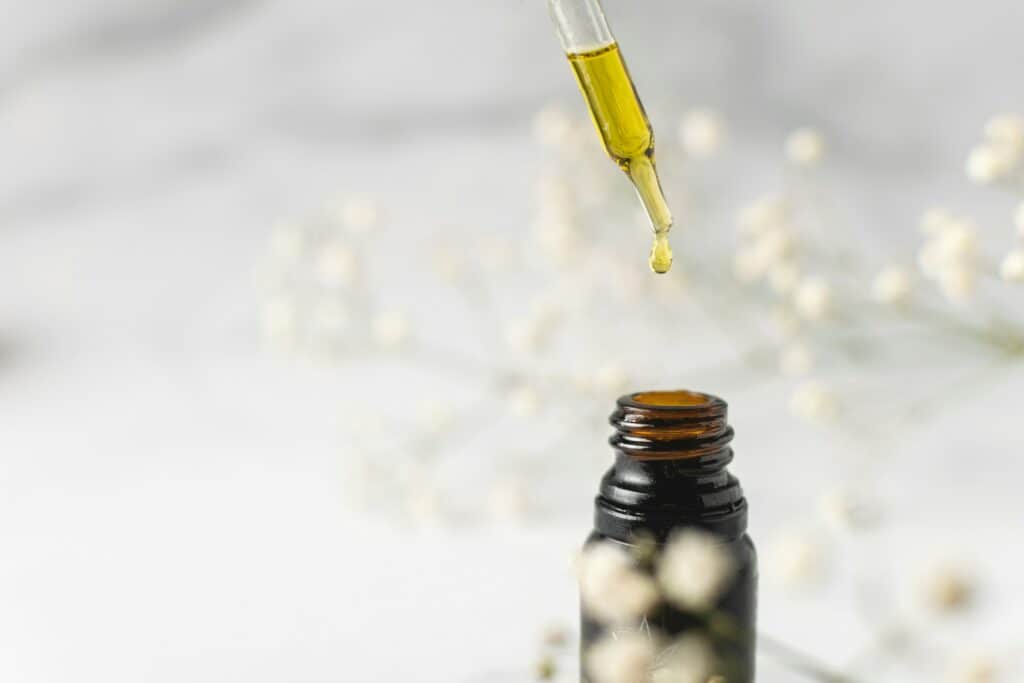
The fewer ingredients the better in my opinion.
Pros and Cons of Using Different Carrier Oils in Natural Deodorant
When crafting a natural homemade deodorant, choosing the right carrier oil is crucial. Each option comes with its own set of pros and cons, affecting everything from consistency to skin benefits and odor control.
Coconut Oil:
This is the go-to carrier oil in many homemade deodorant recipes. It’s rich in fatty acids and has natural antibacterial properties, making it highly effective at combating odor-causing bacteria. However, it can melt at warmer temperatures, which might make your deodorant less solid.

Shea Butter:
Shea butter is excellent for moisturizing and has anti-inflammatory properties, which can help soothe skin irritation. It’s also solid at room temperature, contributing to a firmer final product. The downside is that it can be greasy and may feel heavy on the skin. This can be a great addition to your homemade deodorant stick.

Cocoa Butter:
Like shea butter, cocoa butter provides moisturizing benefits and a solid consistency. It has a pleasant scent and helps to nourish the skin. However, it can be a bit harder to mix and might require a double boiler on medium heat to melt properly.
Olive Oil:
Olive oil is a common ingredient in many natural beauty products due to its moisturizing and anti-inflammatory properties. It’s easy to find and mix but can make the deodorant feel oily and might not provide as much odor control as other carrier oils.

Sweet Almond Oil:
Sweet almond oil is light and easily absorbed by the skin, making it a good choice for those with sensitive skin. It helps to keep the skin soft and smooth. However, like olive oil, it might not be as effective in controlling odor compared to more solid oils like coconut oil.
Plain Coconut Oil:
Similar to regular coconut oil, plain coconut oil is effective in odor control and has antibacterial properties. However, it shares the same issue of melting in warmer temperatures, which can be problematic for maintaining a solid deodorant.
Each of these carrier oils can be a valuable addition, depending on your personal preference and skin type. Experimenting with different essential oils and other natural ingredients like beeswax pellets, arrowroot flour, or bentonite clay can help you find the best natural deodorant formula for your needs.
Transitioning to natural deodorant from commercial deodorants can be a process, but with the right ingredients and a little bit of patience, you’ll find a solution that works for you and supports a more natural lifestyle.
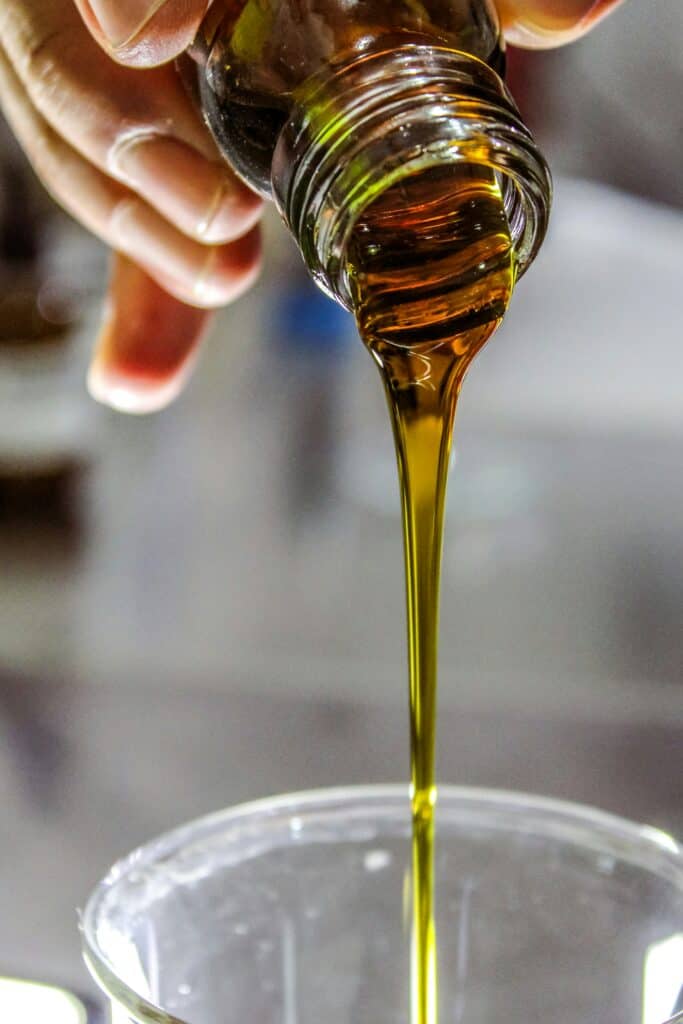
Pros and Cons of Using Cornstarch, Arrowroot Powder, and Tapioca Starch in Natural Deodorant
When creating a natural homemade deodorant, the choice of absorbent powders is crucial. Cornstarch, arrowroot powder, and tapioca starch are popular options, each with unique properties and benefits.
Cornstarch:
- Pros: Cornstarch is an excellent moisture absorber, helping to keep sweat glands dry throughout the day. It’s a common ingredient in many natural products and is readily available in natural food stores. Cornstarch is also affordable and easy to mix into your new recipe for deodorant.
- Cons: While effective, cornstarch can sometimes feel heavy on the skin and may cause irritation for some people. In warmer temperatures, it can become clumpy, which might lead to a less smooth application.
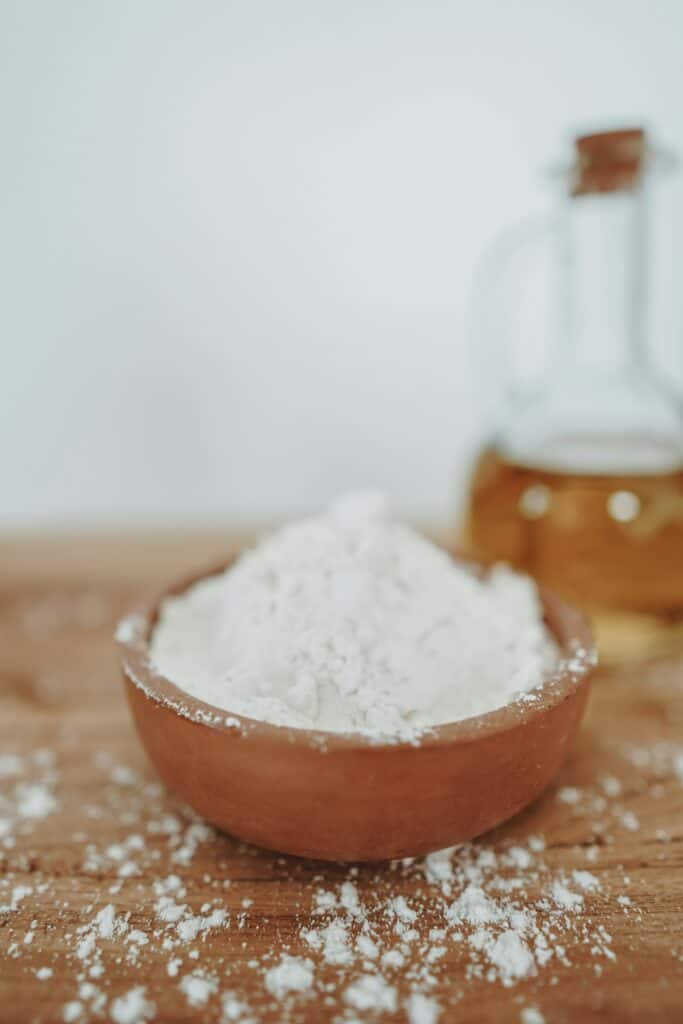
Arrowroot Powder:
- Pros: Arrowroot powder is favored for its light texture and high absorbency, making it a fantastic choice for those seeking the best natural deodorants. It’s gentle on the skin and less likely to cause irritation compared to baking soda. Arrowroot powder is also effective at neutralizing odors without the need for artificial ingredients.
- Cons: It can be a bit pricier than cornstarch, and while it does a great job at absorbing moisture, it might not be as effective for those who sweat heavily.
Tapioca Starch:
- Pros: Tapioca starch offers a smooth and silky texture, which feels great on the skin. It’s highly absorbent and works well in combination with other natural ingredients in natural DIY deodorant recipes. It’s a good alternative for people with sensitive skin or those who experience irritation from other powders.
- Cons: Tapioca starch can be harder to find in some areas and might be more expensive. It also doesn’t provide as much odor control on its own, so it’s best used in conjunction with drops of essential oils or other active ingredients.
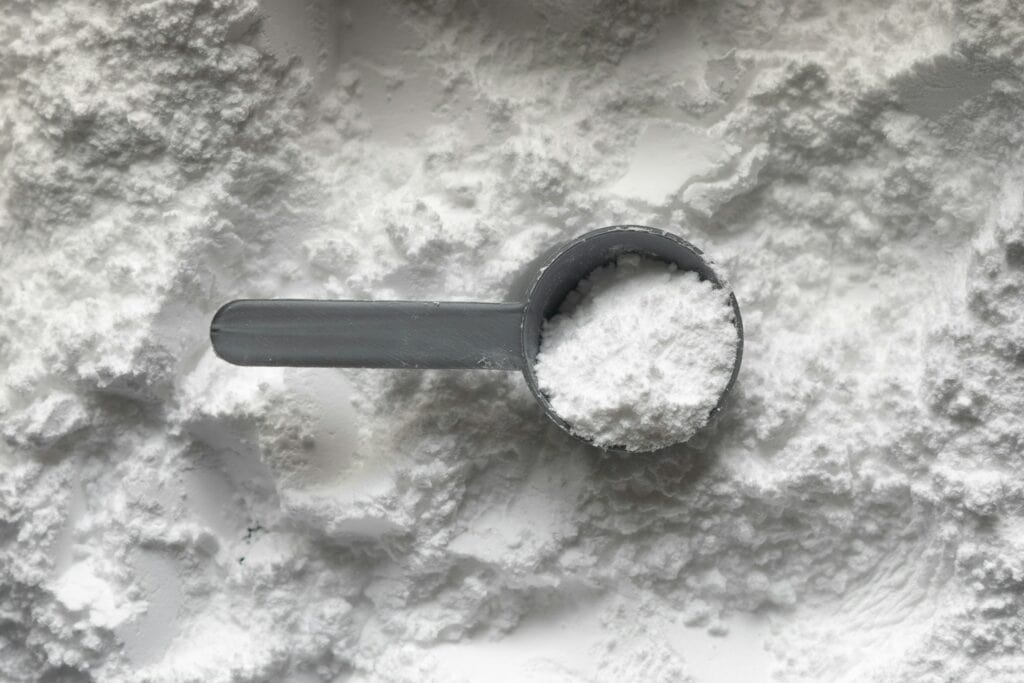
Many people are increasingly concerned about the use of aluminum and other synthetic ingredients in conventional antiperspirants and deodorants. These ingredients are thought to block sweat glands and may have other adverse effects, leading individuals to seek natural alternatives.
While natural deodorants are considered a better option due to their use of gentle, non-toxic ingredients, it’s important to note that there is no direct link between deodorant use and breast cancer. Despite this, the preference for natural products continues to grow, as many seek to avoid potentially harmful substances and embrace a more natural lifestyle.
Incorporating Natural Starches into Your Deodorant
When you’re creating a homemade deodorant, choosing between these powders depends on your personal needs and skin sensitivity. Each of these ingredients can help you achieve a natural product that works effectively without the drawbacks of conventional deodorant antiperspirants, which often contain aluminum-based salts and artificial ingredients.
Benefits:
- Moisture Absorption: All three powders—cornstarch, arrowroot powder, and tapioca starch—help to absorb sweat, keeping your underarms dry.
- Gentle on Skin: These natural ingredients are less likely to irritate the skin compared to many commercial deodorants.
- Natural Process: Using these powders supports a natural process of sweat absorption without clogging sweat glands.
Considerations:
- Skin Sensitivity: Choose the powder that best suits your skin type. Arrowroot powder and tapioca starch are typically better for sensitive skin.
- Odor Control: For enhanced odor control, combine these powders with antibacterial essential oils like tea tree or lavender.
- Consistency: Experiment with different ratios to achieve the desired consistency, especially if you want to make a solid deodorant that fits into deodorant tubes or lotion bars.

Using natural starches like cornstarch, arrowroot powder, and tapioca starch in your homemade deodorant recipes offers a healthier alternative to conventional deodorants. These ingredients help manage moisture and odor while being gentle on the skin.
By choosing natural alternatives, you contribute to less waste and avoid potential health risks associated with aluminum-based salts in commercial deodorants. Plus, making your own deodorant allows for customization, ensuring you get a product that perfectly suits your needs and supports a more natural lifestyle.
Essential Oils for Homemade Natural Deodorant: Scents and Properties
This chart provides an overview of essential oils that can be used in homemade natural deodorant, including lavender, tea tree, peppermint, grapefruit, rosemary, orange, cedarwood, and clary sage.
It includes information on the scent and other properties of each oil, such as their antibacterial and moisturizing properties, to help you choose the best oil for your needs.

| Essential Oil | Scent/Smell | Antimicrobial, anti-inflammatory, calming, and good for sensitive skin |
|---|---|---|
| Lavender oil | Floral, calming | Antimicrobial, anti-inflammatory, calming |
| Tea Tree oil | Medicinal, fresh | Antimicrobial, anti-inflammatory, deodorizing |
| Peppermint oil | Minty, refreshing | Antimicrobial, cooling, deodorizing |
| Grapefruit oil | Citrus, tangy | Antimicrobial, deodorizing, uplifting |
| Rosemary oil | Woody, herbal | Antimicrobial, anti-inflammatory, deodorizing |
| Orange oil | Sweet, citrusy | Antimicrobial, deodorizing, uplifting |
| Cedarwood oil | Woody, earthy | Antimicrobial, deodorizing, grounding |
| Clary sage oil | Floral, herbal | Antimicrobial, anti-inflammatory, calming, good for sensitive skin |
Helpful Tools
Making your own natural homemade vegan deodorant is pretty easy, and you don’t need any special tools. However, here are a few things that might come in handy:
- Mixing bowl
- Tablespoon
- Measuring cup
- Spoon or popsicle stick for application
- Airtight container to store the deodorant
How to Make This Simple Natural Homemade Vegan Deodorant
Making natural homemade vegan deodorant is a simple and easy process that can be done in just a few minutes. Here are the instructions to make your own deodorant:
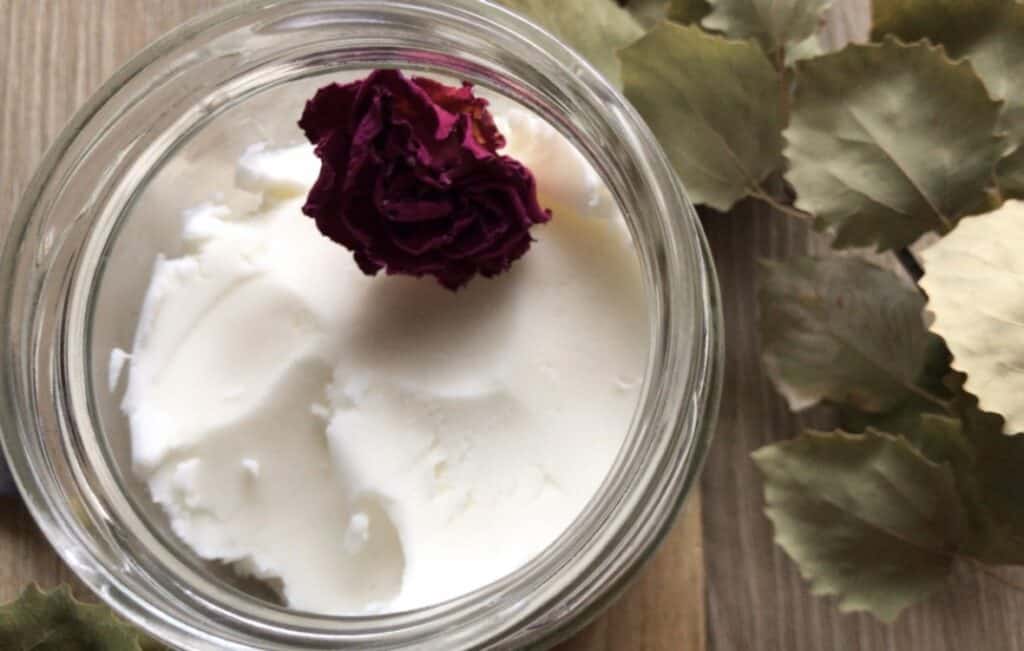
- Add all the ingredients, including arrowroot powder or cornstarch, baking soda, coconut oil, and essential oils, to a bowl.
- Mix all the ingredients together well. You can use a kitchen-aid mixer if you have one, but a regular tablespoon will work just as well.
- Check the consistency of the mixture as you mix it. The consistency of the deodorant may change depending on the weather. Add more coconut oil if needed to achieve a thick paste that spreads easily.
- Once the deodorant has reached the desired consistency, transfer it to a clean and dry container with a tight-fitting lid. A glass jar or tin container works well for this.
Easy Homemade Spray Deodorant Recipe: All-Natural
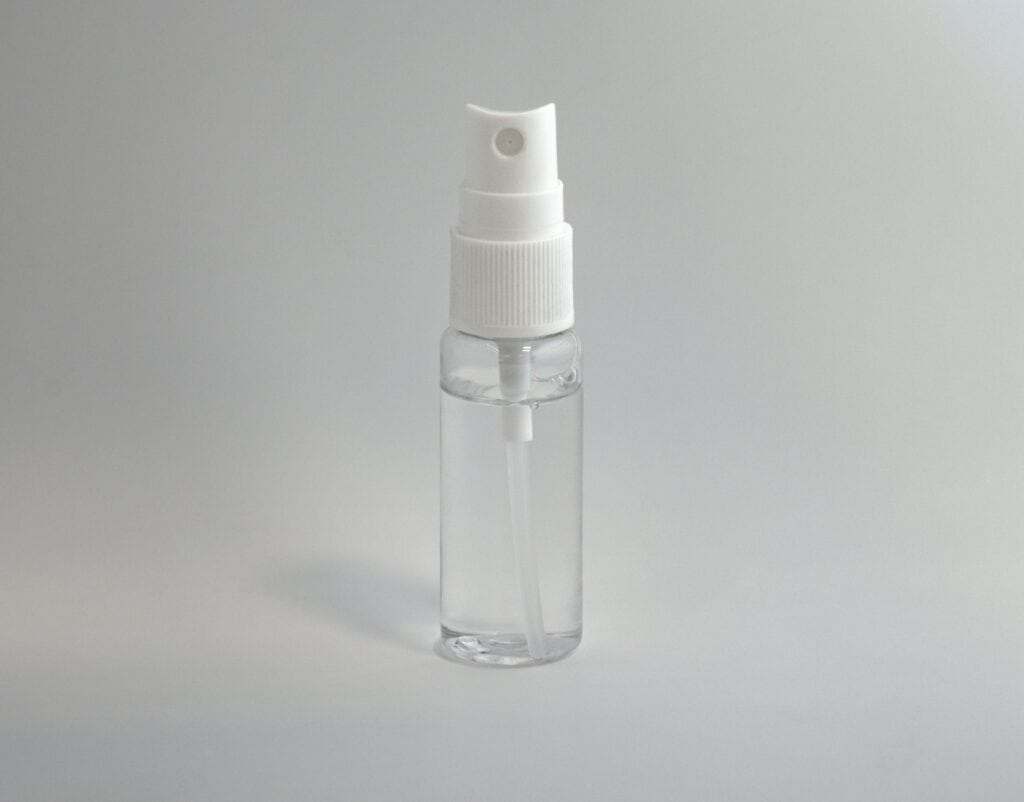
In my original post I didn’t include this option, however diy spray deodorant is so great on the go! If you’re looking for a natural alternative to regular deodorant, this homemade spray deodorant is a fantastic option.
Not only is it free from harmful chemicals, but it also uses simple, natural ingredients that you can easily find in natural food stores. This first recipe is straightforward, making it a great starting point for anyone new to homemade products.
Ingredients:
- 1/2 cup distilled water
- 1/4 cup witch hazel
- 1 tablespoon apple cider vinegar (active ingredient for odor control)
- 10-15 drops of essential oils (lavender, tea tree, or eucalyptus are good choices)
- 1 teaspoon baking soda (optional for extra odor control)
Instructions:
- Combine the Liquids: In a small bowl or directly into a spray bottle, mix 1/2 cup of distilled water and 1/4 cup of witch hazel. Witch hazel is often used by natural brands due to its skin-soothing properties.
- Add Apple Cider Vinegar: Add 1 tablespoon of apple cider vinegar to the mixture. This ingredient helps balance the high pH levels and acts as a natural deodorizer, ensuring your deodorant works effectively.
- Essential Oils: Add 10-15 drops of essential oils. Essential oils not only provide a pleasant scent but also offer antibacterial properties. Lavender, tea tree, and eucalyptus are popular choices among natural deodorant brands.
- Baking Soda (Optional): If you need extra odor control, add 1 teaspoon of baking soda. Be cautious, as baking soda can cause irritation for some people, especially in a warmer temperature.
- Mix Well: Shake the bottle well to ensure all ingredients are combined. If you’re mixing in a bowl first, transfer the mixture to a spray bottle using a funnel.
- Store Properly: Store your homemade spray deodorant in a cool, dark place to maintain its efficacy.
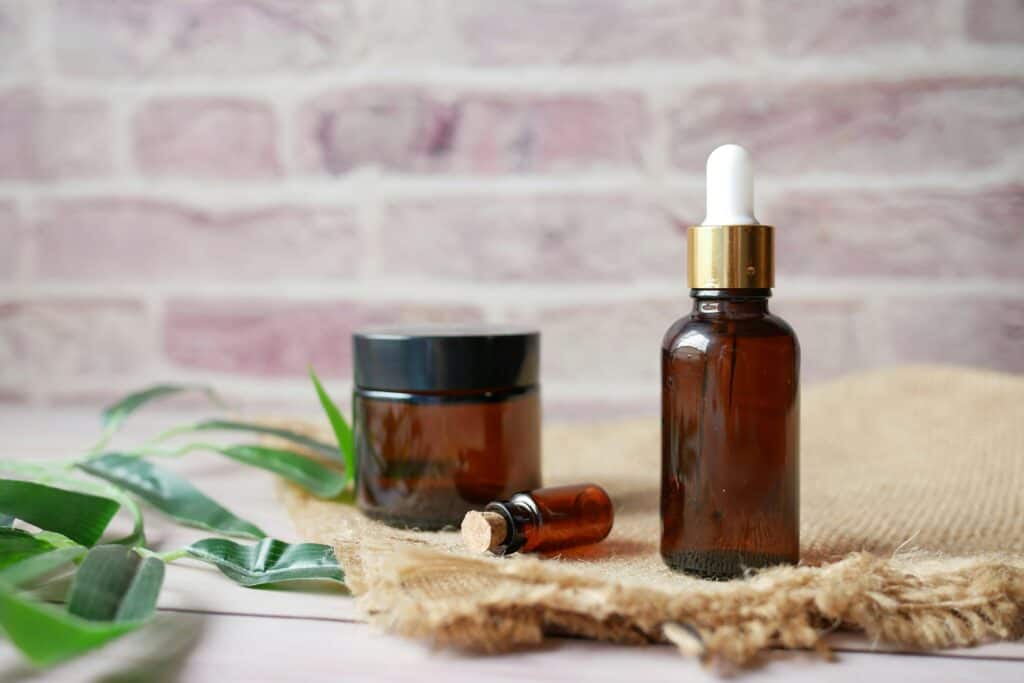
Usage:
- Application: Spray a small amount on clean, dry underarms. Allow it to dry before dressing to avoid any wet spots on your clothes.
- Reapplication: Depending on your activity level and the warmer temperature, you might need to reapply once or twice throughout the day.
Benefits:
- Natural Ingredients: This deodorant uses natural ingredients that are gentle on your skin and effective at controlling odor.
- Customizable: You can adjust the scent and strength by varying the essential oils and baking soda.
- Free Deodorant: Making your own deodorant can be more cost-effective than purchasing natural deodorant brands.
Considerations:
- Skin Sensitivity: The only problem is that some people have sensitivities to different ingredients. A lot of natural deodorants contain baking soda, which can also cause irritation in some people. Simply remove this ingredient if needed. You may be wondering “Will the natural deodorant work if I remove the baking soda?”. Trial and error will be your best friends in this case. Using other antibacterial ingredients such as coconut oil, essential oils, and even apple cider vinegar may help reduce body odor. You can also experiment with different essential oils to find what works best for you.
- Storage: Ensure the deodorant is stored in a cool place, as the apple cider vinegar can lose its effectiveness if exposed to high temperatures.
Tips & Tricks
Here are a few tips and tricks that can help you make the best vegan homemade deodorant possible:
- Store the deodorant in a cool, dry place to prevent melting.
- If you’re new to natural deodorant, it may take some time for your body to adjust. Give it a few weeks before deciding whether it works for you or not.
- You can add a few drops of vitamin E oil to your deodorant to help prolong its shelf life.
- If you have sensitive skin, try using a small amount of the deodorant on a small area of skin first to make sure it doesn’t cause any irritation.
FAQ: Natural Homemade Vegan Deodorant
Using a clean spoon or popsicle stick, remove a small amount of the paste and place it on your armpit. Leave it for about 10 seconds to warm up, then spread it around the under-arm area. Avoid forcing the paste to spread, as it may irritate the sensitive under-arm skin.
Coconut oil is an excellent base for natural deodorant as it is moisturizing and has antibacterial properties that help to kill fungi, yeast, and bacteria.
If you are sensitive to baking soda, you can adjust the recipe by using less of it. You can also try using a higher-end brand of baking soda, such as Bob’s Red Mill. Experiment with different amounts to find the right balance for your skin.
Any essential oil with antibacterial properties can be used in natural deodorant. Some popular choices include lavender oil, tea tree oil, peppermint oil, grapefruit oil, rosemary oil, orange oil, and cedarwood oil. Clary sage essential oil is great for those with sensitive armpits that are prone to razor burn and rashes.
You can switch to natural deodorant at any time. However, you may notice an increase in smell when you first make the switch. This is because your body is adjusting to the new natural deodorant. Be patient, as it can take up to a month for your body to get used to the new deodorant.
The ingredients used in this deodorant should not stain your clothes, but it’s always a good idea to let it dry before getting dressed.
This deodorant should last for several months, depending on how often you use it.

Natural Homemade Deodorant – Vegan and it actually works!
Ingredients
- ½ cup Arrowroot powder (or cornstarch)
- ½ cup Baking soda (use 1/4 cup, if you are sensitive to it)
- 5-7 tbsp Coconut oil
- 15-20 drops Antibacterial essential oils – your scent of choice 🙂
Instructions
- Add all the ingredients, including arrowroot powder or cornstarch, baking soda, coconut oil, and essential oils, to a bowl.
- Mix all the ingredients together well. You can use a kitchen-aid mixer if you have one, but a regular tablespoon will work just as well.
- Check the consistency of the mixture as you mix it. The consistency of the deodorant may change depending on the weather. Add more coconut oil if needed to achieve a thick paste that spreads easily.
- Once the deodorant has reached the desired consistency, transfer it to a clean and dry container with a tight-fitting lid. A glass jar or tin container works well for this.
Video
Notes
Nutrition
Conclusion: Natural Homemade Vegan Deodorant
This natural homemade vegan deodorant recipe is an effective and easy-to-make alternative to store-bought deodorants. After trying various natural deodorants and developing an allergy to one of them, I decided to create my own recipe.
This deodorant is perfect for those who are looking for a simple, vegan, and natural solution to controlling body odor. The ingredients used are common pantry staples and this recipe is perfect for those who are looking for a long-lasting deodorant that works all day, even during intense workouts. I hope you enjoy this homemade natural deodorant recipe as much as I do!
Source: Health Canada – “Cosmetic Safety – Deodorants and Antiperspirants”
Link: Health Canada




Love this recipe! So simple and natural. For mine, I used 1/4 cup baking soda. Because I have sensitive skin, I would use even a little less even next time. For essential oils, I used a blend of Frankincense, Rose, Ylang Ylang, Cedar and added some Sodalite Crystals to the bottom for a fun decoration! Next time I’ll try lavender and eucalyptus 💜 🐰🌱🥰
Awesome so happy you liked it! 💕 It’s very easy to customize this recipe and add your fav essential oils!
Worked pretty well! No rashes like I have gotten from other natural recipes I have tried. In the winter months it lasts a lot longer. Summer months a little more difficult to stay smelling nice. But this is one of the best homemade deodorant recipes I have tried. So thank you very much for sharing
Thank you for the feedback, and I agree in the summer months it’s a little more difficult to have a homemade deodorant that can withstand the heat!
This natural deodorant actually works! Thank you 😊
Hi Chelsea, thank you for your feedback so happy to hear that this homemade deodorant works for you!
This deodorant actually worked pretty well in the winter for me so far so good!
Thanks so much for the feedback Cameron, and I do agree this does work a lot better when its cooler out.